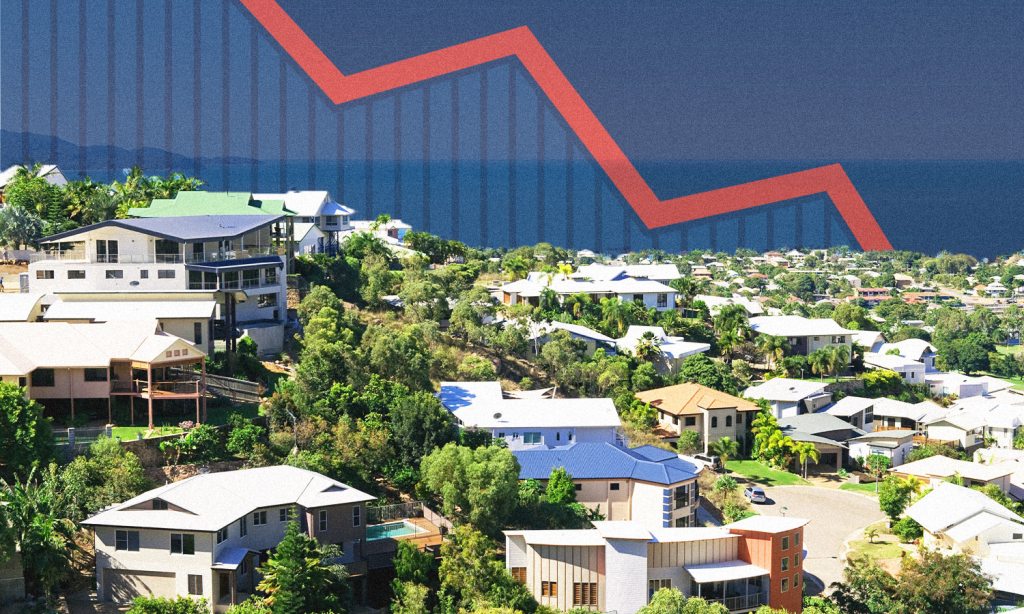The Housing Market Appears to Have Stabilised
Australian house prices, which have seen a dramatic decline over the past year, appear to be levelling out, according to a new report from the analytic firm CoreLogic.
The firm’s Hedonic Home Value Index has recorded its smallest decline over the past month since interest rates began to rise in May of last year. A national average decline of just 0.1% was seen over the February period. Prices have otherwise seen a 7.9% decline over the past 12 months.
CoreLogic puts the changes down to the fact that there are far fewer properties for sale, with homeowners reluctant to sell in a declining market, which has driven demand up.
House prices still declined by between 0.2% and 1.4% across the nation’s capitals, except for Sydney, where prices increased by 0.3%. The increase is thought to be the result of tax changes implemented by the NSW government that allows most first-home buyers to pay an ongoing land tax instead of a lump sum stamp duty, significantly reducing upfront costs, according to Westpac.
However, CoreLogic and Westpac warn that the pause in decline could be short-lived, as further interest rate rises, economic uncertainty, and a rising unemployment rate could all push prices down further. Westpac themselves are predicting a further 8% decline in national property prices over the coming year.
Solar Is Now Australia’s Largest Source of Energy
In positive news for the climate, solar power is now the largest source of energy generation in the country, according to industry consultancy, SunWiz.
The capacity of Australian rooftop solar, which sits on nearly one in three Australian houses, has now reached 20 gigawatts and will soon outpace the entire coal industry. If you include the 11GW generated by solar farms in that equation, solar is already Australia’s largest source of energy.
It’s a position that is only expected to increase as Australia shuts down coal-fired stations at a faster pace than expected and rooftop solar continues to be taken up. It took 11 years for the first 10GW of rooftop solar capacity to be reached, while the second 10GW took just four years. Australians are expected to add 3GW over the coming year and a further 3.2GW next year.
At the same time, coal-generators, like AGL’s Liddell station in the Hunter Valley, are being decomissioned years ahead of their projected lifespans as the energy is becoming increasingly inefficient to produce.
Australia's solar PV demand is increasingly coming from upgrades for households that already have rooftop systems. (Source: Green Energy Markets) pic.twitter.com/6UHobIPbTu
— @phannam@mastodon.green (@p_hannam) February 28, 2023
Solar is still not yet at market saturation point and there is a lot to suggest that it will continue to expand. Homeowners are increasingly expanding and upgrading their rooftop solar, with this accounting for nearly 20% of the capacity installed in 2022.
Prices for solar are also decreasing, as COVID-related delays in materials are worked through. It’s a bad day to be a coal station.
The European Space Agency Wants to Give the Moon a Timezone
How do you tell the time on the moon? Until now, people and robots who have been up there simply use the time on their instrument panels which are set to the time of their place of origin.
This, apparently, is confusing and inefficient, at least according to the European Space Agency. They have argued that we need standardised lunar time, given that space exploration and trips to the moon are set to become increasingly common in the coming years.
Time works differently on the moon, moving faster than it does on Earth and having space missions become out of sync with each other could become dangerous. There is a “unique opportunity” to circumvent this sci-fi first world problem now, the ESA has said, “before the systems are actually implemented.”
If the issue isn’t solved, the risk is that companies and agencies will just give the moon their own time, creating a patchwork of different standards simultaneously.
“This is why we want to raise an alert now, saying let’s work together to take a common decision,” said Patrizia Tavella of the International Bureau of Weights and Measures.
Related: Rising Interest Rates Could Crush the Housing Market, and Millennials Aren’t Mad About It
Related: How COVID Has Impacted the Housing Crisis, Leaving More People Than Ever Living With Parents
Read more stories from The Latch and subscribe to our email newsletter.







